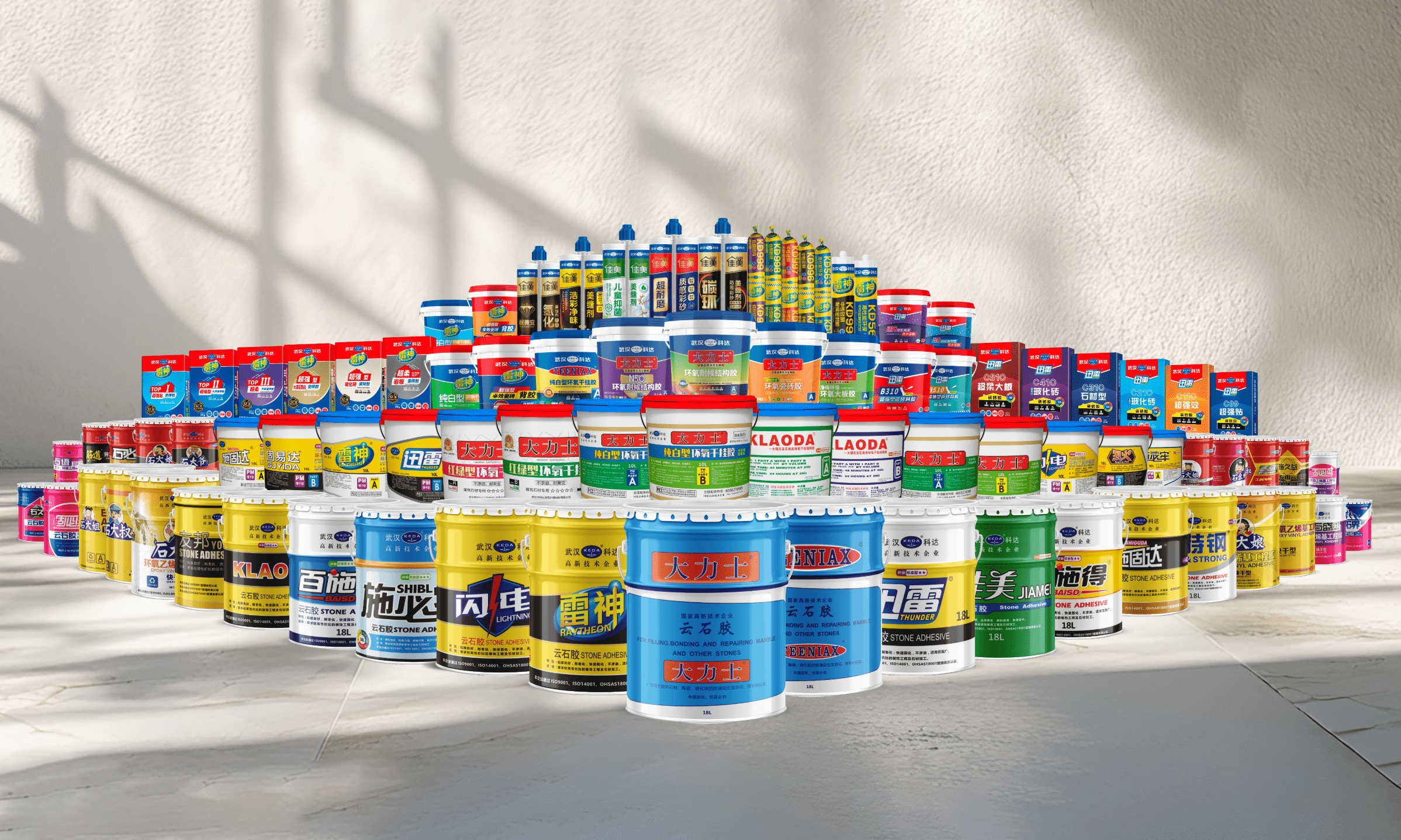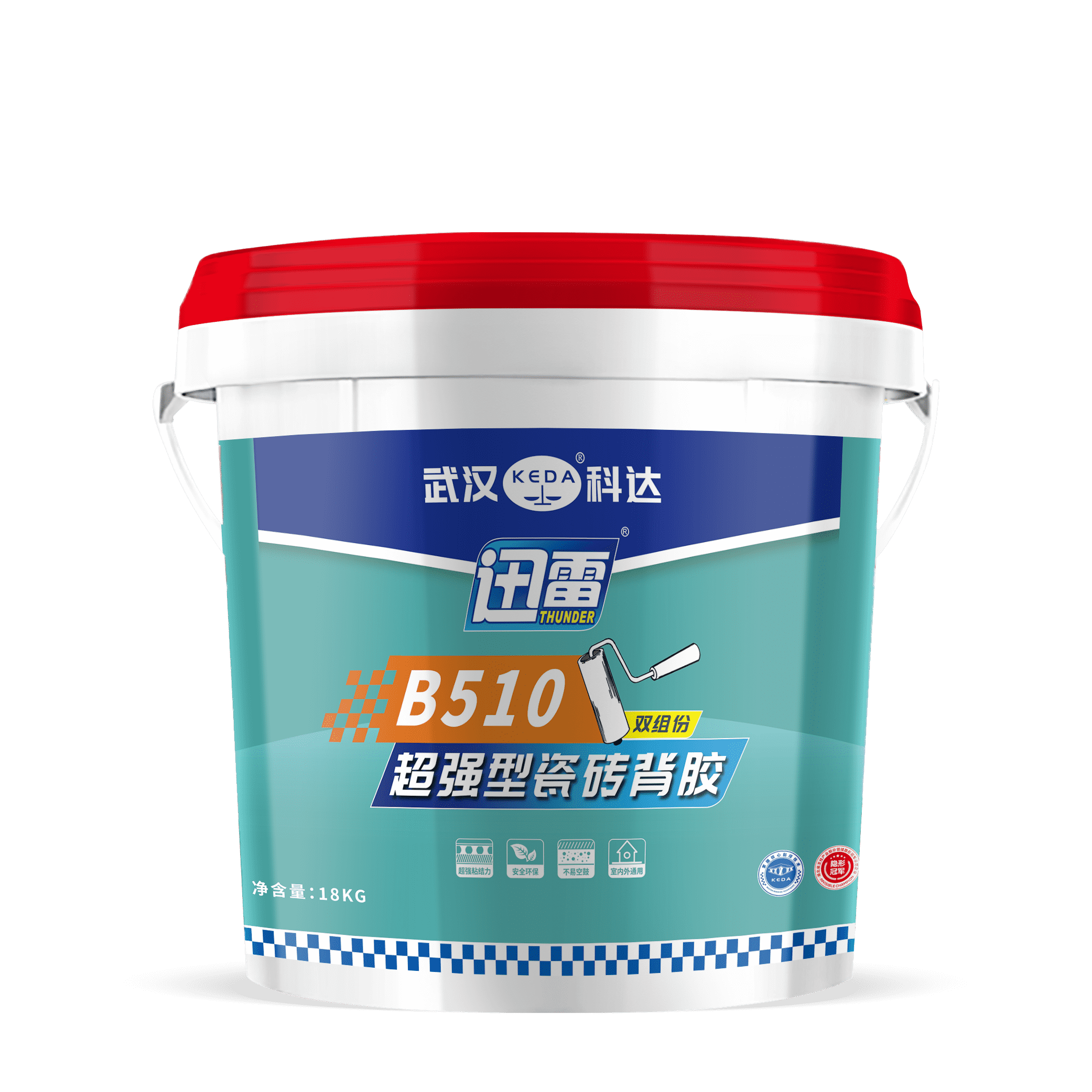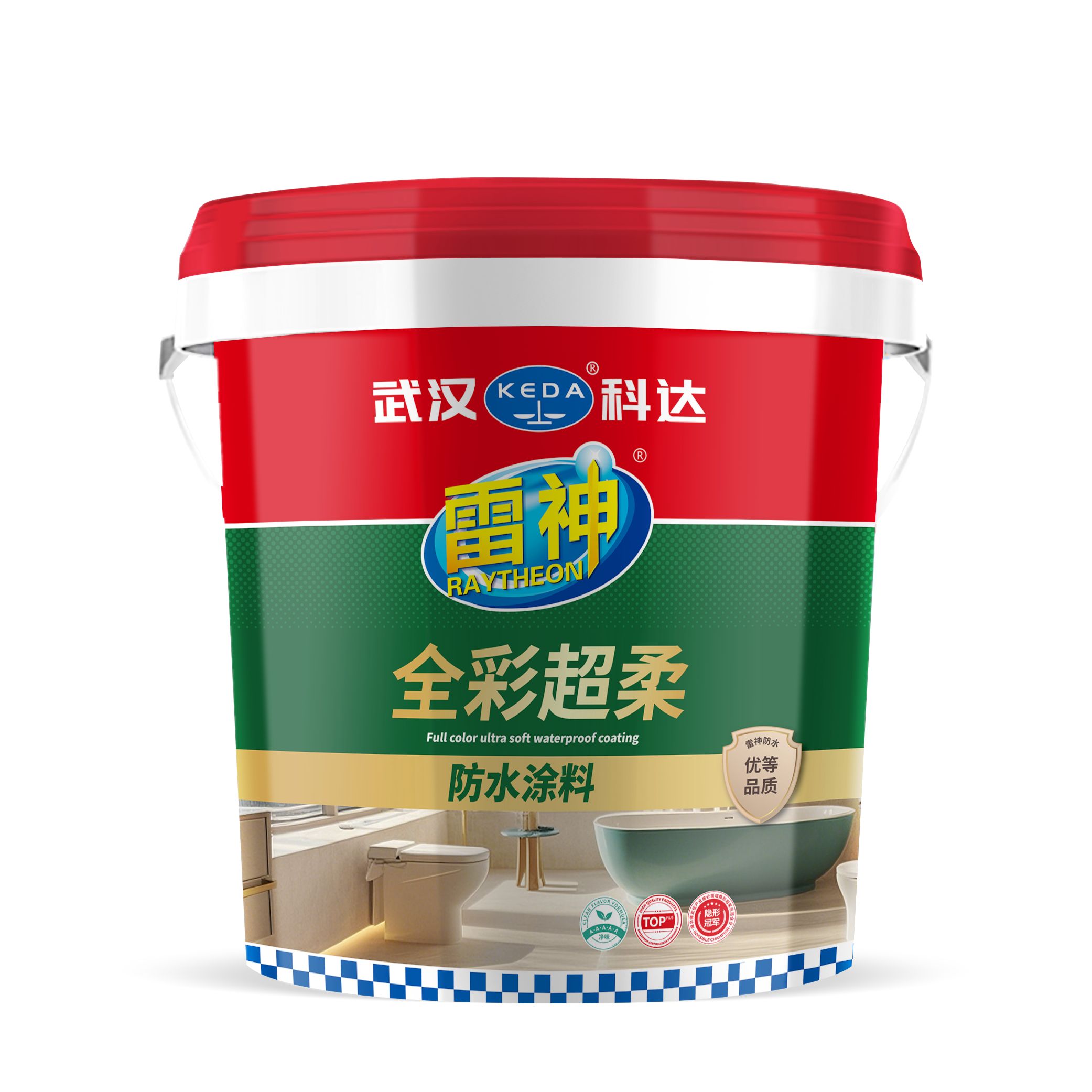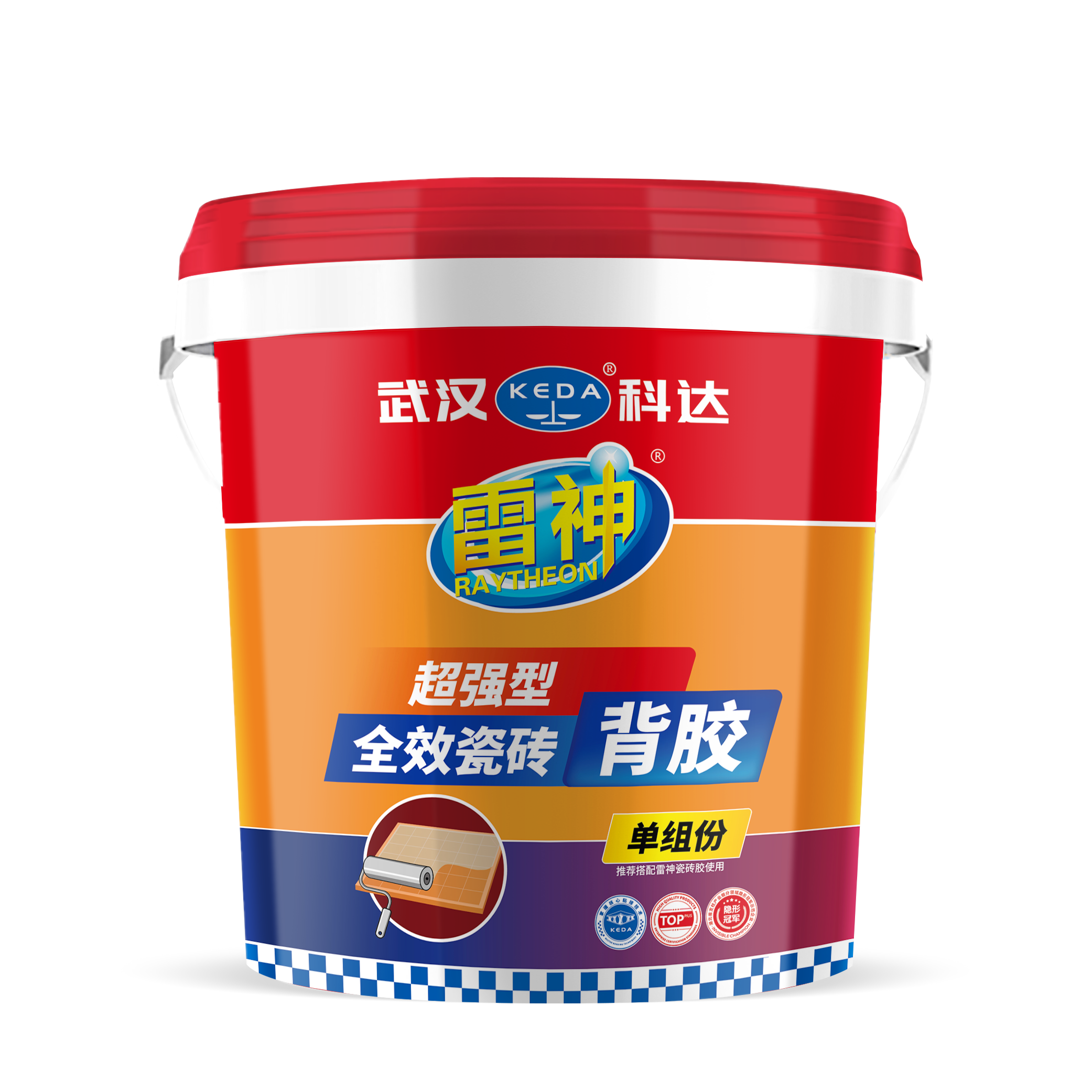

Thunderbolt B510 Super Ceramic Tile Adhesive (two-component)
-
Main features
-
- Emulsion formula, good permeability
- Firmly bonded, anti-seismic brick
- Water and weather resistance, lasting effect
- Safety and environmental protection, health rest assured
-
Product Certification
-
-
-
Color
- Grey
-
Product Specifications
-
- 18kg per Bucket
-
Executive standards
-
- JC/T 907-2018 Concrete Interface Treatment Agent Type I
Product overview
Thunderbolt B510 super ceramic tile adhesive is a kind of high-quality environment-friendly emulsion as the base material, high-quality silicate and various functional fillers by scientific ratio modulation of a two-component ceramic tile back with the interface agent, the product is painted on the back of the ceramic tile, can effectively slow release the wall structure and ceramic tile shrinkage stress, to avoid tile hollowing and falling
Product characteristics
|
Characteristic one
|
Super bond, strong tile
|
Characteristic II
|
Effectively avoid empty drum
|
|
Characteristic three
|
Indoor and outdoor general
|
Characteristic four
|
Low VOC, safety and environmental protection
|
Scope of application
brick, glazed tile, vitrified tiles and other different types of ceramic tiles back treatment
Interface treatment of concrete base surface
Construction operation
【Tile Preparation】
Before construction, use a wire brush, bristle brush, or other tools to remove floating dust and mold release agent from the back of the tiles.
【Material Mixing】
Pour the liquid component into a clean container and start stirring. Add the powder component in the specified ratio (see the product label for the exact ratio), and keep stirring while adding the powder until all materials are mixed uniformly. Let the mixture stand for 3–5 minutes, then stir again for 30–60 seconds before use.
【Back Coating Adhesive Application】
Place the prepared tiles horizontally. Use a roller or bristle brush to apply the back coating adhesive to the back of the tiles, brushing in crisscross (vertical and horizontal) directions to ensure even coverage with no missed areas.
【Curing of Back Coating Adhesive】
After applying the adhesive, stack the tiles centrally with spacers between them and allow the back coating adhesive to cure until completely dry (approximately 2–4 hours under standard laboratory conditions). The adhesive film should not peel off easily when rubbed by hand. In low-temperature, high-humidity, or poorly ventilated environments, extend the drying time as needed.
【Tile Bonding】
Once the back coating adhesive is completely dry, proceed with tile installation using our company’s tile adhesive series products.
【Recommended Dosage】
Vitrified tiles: 1.3±0.2 kg/m². The specific dosage varies depending on the tile type and the texture on the back of the tiles.
Precautions
It is strictly prohibited to add additional water, unused materials can continue to be used after sealing
Tile back treatment
must be carried out before applying adhesive Construction temperature: 5 ℃ to 35 ℃
Outdoor construction should be protected to avoid water contact with the construction surface
Transportation and storage
-
Storage conditionsThe product should be stored in a cool and ventilated place, no exposure, rain, recommended storage temperature 5-35 ℃
-
Transportation requirementsDuring transportation, prevent rain, sun exposure, cold, squeeze and collision, and keep the package intact.
-
Warranty PeriodProduct shelf life is 12 months from date of manufacture
FAQ
-
Q
The coating may stratify, precipitate or form a skin on the surface after storage
-
A
The storage temperature is too high, the seal is not tight, or it has been left for a long time without stirring.
Solution Store as required by the instruction manual (such as away from light and in an environment of 5 to 35℃);
-
Q
The coating does not cure for a long time after application
-
A
1. Incorrect two-component ratio;
2. Low-temperature or high-humidity environment;
Solution: Mix strictly in proportion and use an electric mixer.
2. The ambient temperature should be between 5 and 35 degrees Celsius, and ventilation should be enhanced.
-
Q
Cracks appear in the coating or it detaches from the base layer
-
A
The base layer has not been cleaned (with loose dust and oil stains).
2. Applying too thick a single coat;
3. The material is incompatible with the base layer.
Solution: 1. Clean the base layer and moisten it (without standing water);
2. Apply thin coats multiple times (0.5 to 1mm per layer);
3. The corners are rounded and the reinforcing material 249 is added.
-
Q
There are fine holes or bulges on the surface of the coating
-
A
1. The base layer contains pores, and gas escapes during painting.
2. Exposure to high temperatures or excessive application.
Solution: 1. Moisten the base layer to saturation before construction;
2. Adopt a thin-coating process and avoid construction under direct sunlight.
3. Remove the bulging part and then repair it.
-
Q
The coating sags on the vertical surface, resulting in uneven thickness
-
A
Applying too thickly at one time or using improper construction methods.
Solution: Apply in three coats up to 1.5mm, crossing the horizontal and vertical directions.
2. Use a toothed scraper to control the thickness.
-
Q
Leakage occurs during the water-tightness test or after use
-
A
1. The coating has missed areas and pinholes.
2. The cracks in the base layer have not been treated or the quality of the materials is poor.
Solution: Repair the defective areas, reapply the paint and conduct a water-tightness test.
2. Additional layers should be added to important parts (such as the root of the pipe).
-
Q
The surface of the coating is white, discolored or uneven in color
-
A
1. Construction in damp environments (whitening);
2. Ultraviolet radiation or chemical erosion (discoloration).
3. Improper proportioning of two-component products (uneven color) Solution: 1. Select anti-whitening coatings and ensure the base layer is dry;
2. Weather-resistant coatings should be selected for outdoor use (coatings that can be used exposed).
-
Q
Paints release harmful gases (such as VOCs)
-
A
Using inferior or non-environmentally friendly materials.
Solution: 1. Choose low-VOC and non-toxic products (such as polymer cement-based coatings);
2. Ensure good ventilation during construction and wait until it has cured before moving in.
Preventive measures: 1. Base treatment: Ensure it is solid, flat, and free of oil stains. Base surfaces with high water absorption rates need to be moistened.
2. Material Selection: For damp substrates, choose coatings with strong adhesion (such as cement-based permeable crystalline type).
High-elasticity coatings (such as polyurethane) should be used for high-deformation areas.
3. Environmental Control: Avoid construction on rainy days, in winds of force 5 or above, or in extreme temperatures.
4. Process Specifications: The total thickness of the coating is ≥1.2mm (for organic coatings) or ≥3.0mm (for cement-based coatings).
The joint width should be no less than 100mm to avoid any missed coating.
Special Scene Precautions:
1. Basement project: Reactive coatings are recommended for the water-facing side, while cement-based coatings are suitable for the water-facing side.
2. Winter construction: Prefer reactive coatings to avoid the problem of low-temperature curing.
3. Renovation of old layers: Thoroughly remove the original coating and, if necessary, use an interface agent to enhance adhesion.
By standardizing material selection, strict construction and post-construction maintenance, the occurrence of problems with waterproof coatings can be significantly reduced. If the problem has already occurred, it should be repaired in a targeted manner based on the specific cause, and priority should be given to checking the compatibility of the grassroots level and materials.
Related Products



WeChat Channels


TikTok














